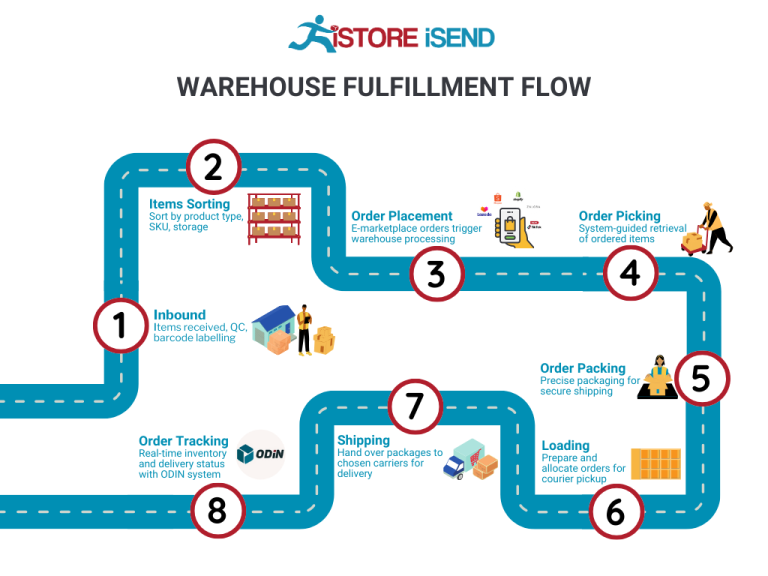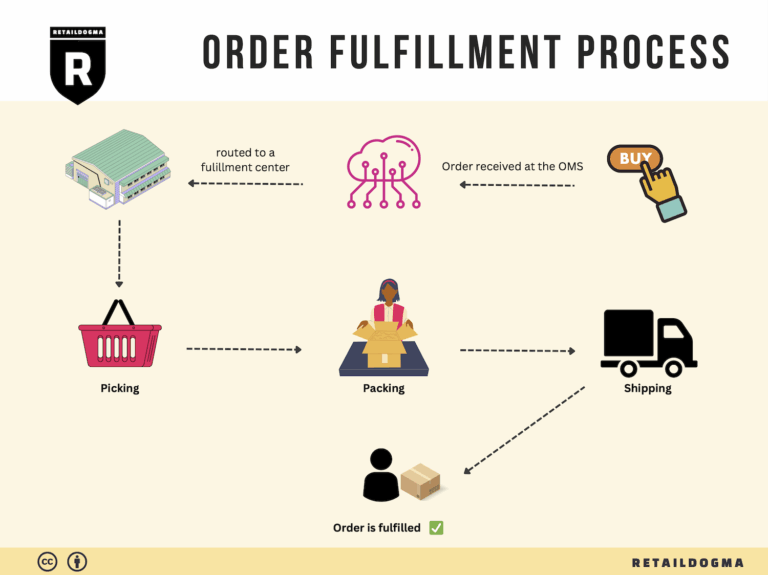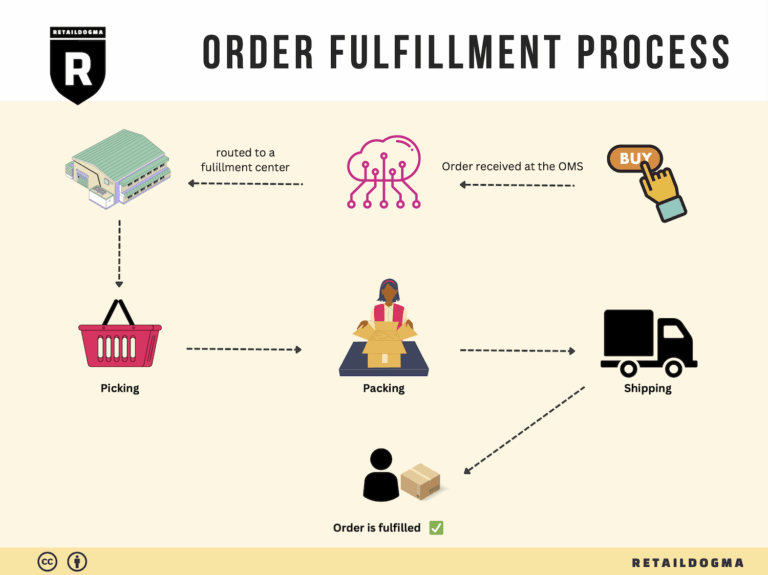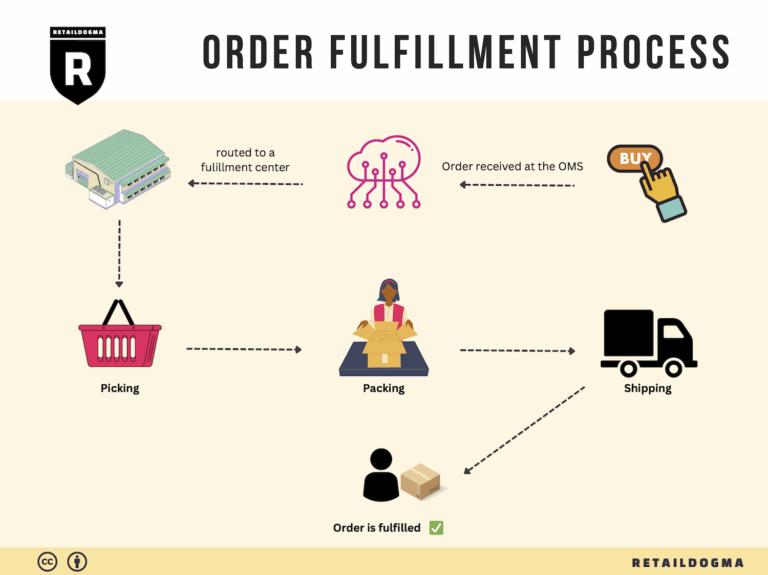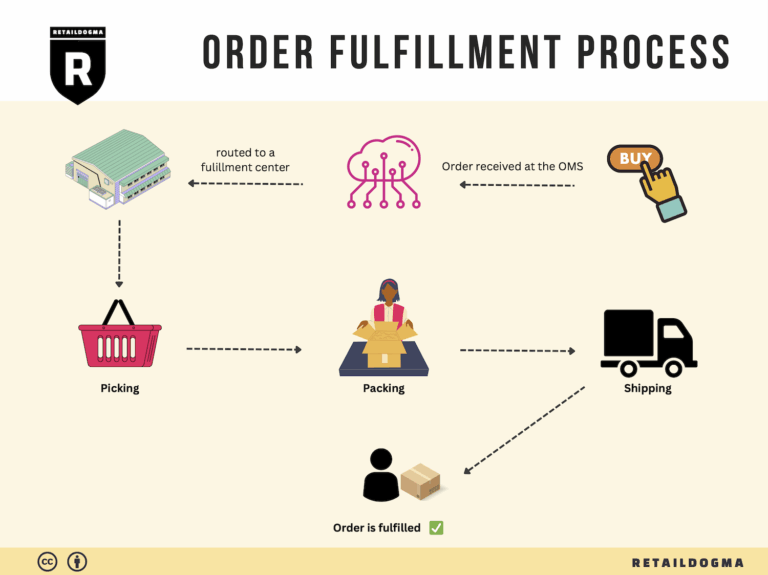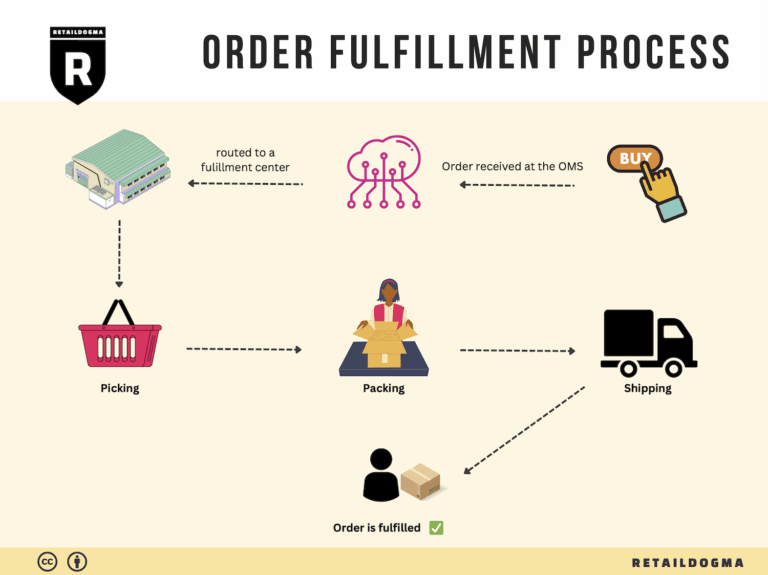What Is A Fulfillment Center? A Complete Guide (2025)
What is E-commerce Fulfillment? An Introduction for Growing Businesses
Understanding E-commerce Fulfillment: A Key to Scaling Your Business
As a growing e-commerce business owner, you may find yourself overwhelmed with the logistics of packing and shipping orders. The excitement of generating sales can quickly turn into a daunting task when you’re faced with managing inventory, ensuring timely deliveries, and maintaining customer satisfaction. This is where effective e-commerce fulfillment comes into play.
E-commerce fulfillment is simply the process of getting a product from your warehouse or fulfillment center to the hands of your customer. It encompasses everything from inventory management and order processing to packaging and shipping. With the right fulfillment strategy, you can streamline these processes, allowing you to focus on what you do best—growing your business.
In this guide, we will explore various fulfillment models that can cater to your specific needs. You’ll learn about options such as Third-Party Logistics (3PL), Fulfillment by Amazon (FBA), and other alternatives. Each model has its own set of advantages and challenges, and understanding these can help you make informed choices that align with your business goals.
We will also delve into the core services associated with e-commerce fulfillment. These include inventory storage, order picking and packing, shipping, and customer service. Knowing what services are available can empower you to select a fulfillment partner that meets your operational requirements and customer expectations.
Choosing the right fulfillment partner is crucial for your business’s success. We will provide insights into the key factors to consider when evaluating potential partners, such as their technology capabilities, delivery speed, and scalability. A strong partnership can significantly enhance your operational efficiency and customer satisfaction.
Lastly, we will discuss pricing structures associated with various fulfillment services. Understanding how costs are calculated—whether through flat rates, per-order fees, or variable pricing based on order volume—will help you budget effectively and make strategic decisions.
The ultimate goal of this guide is to empower you to make smart, informed decisions about your logistics operations. By optimizing your e-commerce fulfillment strategy, you can enhance customer experiences, reduce overhead costs, and set your business up for sustainable growth.
What You’ll Learn In This Guide
- What is E-commerce Fulfillment? An Introduction for Growing Businesses
- The Order Fulfillment Process: From ‘Buy’ Button to Customer’s Door
- Comparing Fulfillment Models: In-House vs. 3PL vs. Dropshipping
- A Deep Dive into Amazon FBA: Pros, Cons, and Who It’s For
- Core Services Offered by Fulfillment Centers
- How to Choose a Fulfillment Partner: A 6-Point Checklist
- Understanding Fulfillment Pricing: A Breakdown of Common Fees
- Frequently Asked Questions (FAQs) about Fulfillment
- Conclusion: Is Outsourcing Fulfillment the Right Move for Your Business?
- Important Disclaimer
The Order Fulfillment Process: From ‘Buy’ Button to Customer’s Door
1. Receiving Inventory
The first step in the order fulfillment process is receiving inventory, which is critical for maintaining stock levels and ensuring that products are available for customers when they place orders. When shipments arrive at the fulfillment center, they must be checked for accuracy and quality. This involves verifying the items against purchase orders and inspecting them for any damages.
Importance: Effective inventory receiving is essential for preventing stockouts and ensuring a smooth flow of goods through the supply chain. A well-organized receiving process can minimize delays and ensure that inventory data is accurately recorded in the system.
Key Term: SKU (Stock Keeping Unit) – Each product should have a unique SKU that helps in tracking inventory levels, managing stock efficiently, and simplifying the reordering process.
2. Warehouse Storage
Once the inventory has been received and processed, it is placed into storage. This step involves organizing products in a way that maximizes space and allows for efficient retrieval. Warehouses typically use various storage systems such as shelving, pallets, and bins, which are strategically located based on product demand and size.
Importance: Proper warehouse storage is crucial for optimizing space and ensuring that items are easily accessible. This reduces the time it takes to fulfill orders and can significantly impact overall operational efficiency.
Key Term: ABC Analysis – This inventory categorization technique helps prioritize items based on their value and turnover rate, ensuring that high-demand products are stored in easily accessible locations.
3. Order Picking
Order picking is the process of retrieving items from storage to fulfill customer orders. This step can be executed using several methods, including single order picking, batch picking, or zone picking, depending on the volume of orders and the layout of the warehouse. Pick lists, which detail the items and quantities needed for each order, guide the picking process.
Importance: Efficient order picking is essential for minimizing errors and speeding up the fulfillment process. The accuracy of this step directly affects customer satisfaction, as incorrect items can lead to returns and dissatisfied customers.
Key Term: Pick Lists – These documents or digital tools outline the specific items to be retrieved for each order, helping pickers stay organized and efficient.
4. Order Packing
After items have been picked, they move to the packing stage, where they are prepared for shipment. This involves placing products in appropriate packaging materials to protect them during transit. Packing must also include labeling with shipping information and any necessary documentation, such as invoices or return instructions.
Importance: Proper packing is vital to prevent damage during shipping and ensure that the order arrives in good condition. Additionally, well-packed orders contribute to a positive customer experience and can enhance brand perception.
Key Term: Packing Slip – A document included in the package that lists the items contained within, serving as a receipt for the customer and aiding in returns if necessary.
5. Shipping & Delivery
The final step in the order fulfillment process is shipping and delivery. Once orders are packed, they are transferred to a shipping carrier for distribution. This process includes selecting the appropriate shipping method based on speed, cost, and customer preferences. Many companies, including Walmart, leverage advanced logistics networks to optimize delivery times and costs.
Importance: Efficient shipping and delivery are crucial for meeting customer expectations for speed and reliability. With the rise of e-commerce, consumers increasingly demand fast delivery, making this step a critical component of the overall customer experience.
Key Term: Last-Mile Delivery – This term refers to the final step of the shipping process, where the package is delivered from a transportation hub to the customer’s doorstep. It is often the most complex and costly part of the shipping process, emphasizing the importance of efficient logistics solutions.
By understanding and optimizing each of these five steps in the order fulfillment process, e-commerce business owners and operations managers can significantly enhance their operational efficiency, improve customer satisfaction, and ultimately drive sales growth.
Comparing Fulfillment Models: In-House vs. 3PL vs. Dropshipping
Fulfillment Model Comparison Table
| Model | Who Handles Inventory | Best For (Business Stage) | Key Advantage | Key Disadvantage |
|---|---|---|---|---|
| In-House Fulfillment | Business owns and manages inventory | Established businesses with stable sales | Full control over inventory and operations | High overhead costs and resource-intensive |
| Third-Party Logistics (3PL) | 3PL provider manages inventory | Growing businesses looking to scale | Access to expertise and scalable solutions | Less control over inventory and fulfillment speed |
| Dropshipping | Supplier manages inventory | Startups and small businesses | Low startup costs and minimal risk | Lower profit margins and potential for stock issues |
In-House Fulfillment
In-house fulfillment involves a business managing its own inventory and logistics. This model is best suited for established businesses that have a stable sales volume and sufficient resources to invest in warehousing, staffing, and technology. The primary advantage of in-house fulfillment is the complete control it provides over inventory management and order processing. Businesses can tailor their logistics processes to meet specific customer needs, enhance their brand experience, and maintain quality control over products. However, this model also comes with significant disadvantages, including high overhead costs associated with maintaining a warehouse, hiring and training staff, and investing in technology and equipment. Additionally, businesses must handle all aspects of the supply chain, which can be resource-intensive and challenging, particularly as they scale.
Third-Party Logistics (3PL)
Third-party logistics (3PL) involves outsourcing inventory and order fulfillment to a specialized provider. This model is particularly beneficial for growing businesses looking to scale their operations without the burden of managing logistics in-house. 3PL providers offer a range of services, including warehousing, inventory management, shipping, and returns processing, often leveraging advanced technology and expertise to optimize fulfillment processes. The key advantage of using a 3PL is the ability to quickly scale operations based on fluctuating demand, allowing businesses to focus on core competencies such as marketing and product development. However, relying on a 3PL means ceding some control over inventory and fulfillment speed, which can lead to potential misalignments with customer expectations. Businesses must also be diligent in selecting a reputable provider to ensure reliability and quality service.
Dropshipping
Dropshipping is a fulfillment model where the retailer does not hold inventory but instead relies on suppliers to ship products directly to customers. This model is ideal for startups and small businesses with limited capital, as it requires minimal upfront investment and reduces the risk of unsold inventory. The primary advantage of dropshipping is the low barrier to entry, allowing entrepreneurs to test product ideas without committing to large inventory purchases. However, dropshipping also comes with significant drawbacks, including lower profit margins due to reliance on suppliers and potential challenges with stock availability. Furthermore, businesses have less control over shipping times and product quality, which can lead to customer dissatisfaction if not managed carefully. For those considering dropshipping, it is crucial to establish strong relationships with reliable suppliers to mitigate these risks and ensure a positive customer experience.
By understanding the intricacies of these fulfillment models, e-commerce business owners can make informed decisions that align with their growth objectives, operational capabilities, and market demands. Each model presents unique benefits and challenges, and the right choice will depend on the specific context and stage of the business.
A Deep Dive into Amazon FBA: Pros, Cons, and Who It’s For
Understanding Fulfillment by Amazon (FBA)
Fulfillment by Amazon (FBA) is a service offered by Amazon that allows sellers to store their products in Amazon’s fulfillment centers. In turn, Amazon handles storage, packaging, and shipping on behalf of the sellers. This service streamlines the logistics process for e-commerce businesses, enabling them to focus on growth while leveraging Amazon’s vast distribution network.
When a customer places an order for an FBA product, Amazon takes care of the entire fulfillment process, including customer service and returns. This means sellers can benefit from Amazon’s advanced logistics capabilities and customer base, significantly enhancing their market reach and operational efficiency.
How FBA Works
-
Setup: Sellers create an Amazon seller account and enroll in the FBA program. They then list their products and prepare them for shipment to Amazon’s fulfillment centers.
-
Shipping Inventory: Sellers send their products to one or more of Amazon’s warehouses. Amazon provides guidelines on how to prepare and package the items, including labeling requirements.
-
Storage: Once the products arrive at the fulfillment center, they are stored until sold. Amazon manages the inventory, ensuring products are readily available for shipping.
-
Order Fulfillment: When a customer orders an FBA product, Amazon picks, packs, and ships the item. They also handle customer service inquiries and returns, allowing sellers to focus on other aspects of their business.
-
Payment and Fees: Sellers receive payments for their sales, minus Amazon’s fees. These fees can include storage fees for items stored in Amazon’s warehouses and fulfillment fees for each unit sold.
Pros of Using FBA
Prime Eligibility
One of the most significant advantages of FBA is that products become eligible for Amazon Prime. Prime members enjoy expedited shipping options, which can increase sales significantly. This eligibility can attract more customers who prefer the convenience of fast and free shipping.
Customer Trust
Amazon has built a strong reputation for reliability and customer service. By using FBA, sellers can leverage this trust, as customers are more likely to purchase products fulfilled by Amazon due to the perceived assurance of quality service and easy returns.
Multi-Channel Fulfillment
FBA is not limited to Amazon sales alone. Sellers can use FBA to fulfill orders from other sales channels, including their websites or other marketplaces. This multi-channel capability allows for centralized inventory management and streamlined logistics, enhancing overall efficiency.
Scalability
FBA enables sellers to scale their operations without the need to invest heavily in warehousing and logistics. As demand increases, sellers can simply send more inventory to Amazon without worrying about storage space or shipping logistics.
Cons of Using FBA
High Fees
While FBA offers numerous advantages, it comes at a cost. Sellers must pay various fees, including monthly storage fees and per-item fulfillment fees. These costs can add up, particularly for businesses with low margins or slow-moving inventory.
Strict Inventory Rules
Amazon has strict policies regarding inventory management, including limitations on the number of units that can be stored and specific guidelines for labeling and packaging. Failure to comply with these rules can result in additional fees or even account suspension.
Commingling Risks
FBA uses a commingling strategy where products from multiple sellers are stored together. This can lead to issues such as receiving returns that do not belong to the original seller or having counterfeit products mixed with genuine stock. While Amazon has measures to mitigate this risk, it remains a concern for many sellers.
Loss of Control
When using FBA, sellers relinquish control over the fulfillment process. This means they have to rely on Amazon’s systems and processes, which may not always align with their specific business needs or customer service standards.
Who is FBA Best For?
Fulfillment by Amazon is best suited for e-commerce businesses looking to scale quickly and efficiently. It is particularly beneficial for:
-
Small to Medium-Sized Businesses: These businesses may not have the resources to manage their own fulfillment centers and can leverage Amazon’s infrastructure to expand their reach.
-
Sellers with High Sales Volume: Businesses that experience consistent high sales can benefit from the economies of scale provided by FBA, as the fulfillment fees may be offset by increased sales.
-
New Sellers: Entrepreneurs new to e-commerce can use FBA to simplify the logistics process, allowing them to focus on marketing and product development.
-
Sellers with Seasonal Products: Businesses that sell seasonal items can benefit from FBA’s ability to handle fluctuations in inventory without the need for long-term commitments to warehousing.
Conclusion
In summary, Fulfillment by Amazon offers a powerful solution for e-commerce businesses looking to streamline their logistics and reach a broader audience. While the program comes with its set of challenges, the advantages—such as Prime eligibility, enhanced customer trust, and multi-channel fulfillment—make it an attractive option for many sellers. By weighing the pros and cons, e-commerce businesses can determine if FBA aligns with their operational goals and growth strategies.
Core Services Offered by Fulfillment Centers
Inventory Management & Warehousing
Fulfillment centers offer robust inventory management and warehousing solutions that are critical for e-commerce businesses. This service involves not only the physical storage of products but also the systematic tracking and management of inventory levels. Fulfillment centers utilize sophisticated inventory management systems that provide real-time data on stock levels, order status, and sales trends.
The benefits of effective inventory management are manifold. For one, it reduces the risk of stockouts, which can lead to lost sales and dissatisfied customers. By maintaining optimal inventory levels, businesses can ensure that they meet customer demand without overstocking, which ties up capital and increases storage costs. Furthermore, advanced inventory tracking helps businesses understand which products are performing well and which are not, enabling better forecasting and purchasing decisions. This insight is invaluable for scaling operations, as it allows businesses to allocate resources effectively and streamline supply chain processes.
Pick and Pack Services
Pick and pack services are at the core of what fulfillment centers do. This process involves selecting the correct items from inventory (picking) and packaging them for shipment (packing) according to specific customer orders. Fulfillment centers employ trained staff and automated systems to ensure accuracy and efficiency during this process.
The primary benefit of pick and pack services is speed. In an age where consumers expect quick delivery times, fulfillment centers can significantly reduce order processing times. By leveraging technology and optimized workflows, these centers can fulfill orders quickly and accurately, which enhances customer satisfaction and loyalty. Moreover, outsourcing this function allows e-commerce businesses to focus on their core competencies, such as product development and marketing, rather than logistics. This operational efficiency is crucial for scaling, as it allows companies to handle larger order volumes without the need for significant investments in in-house logistics.
Kitting and Assembly
Kitting and assembly services involve combining multiple products into a single package or preparing items for sale as a complete unit. This service can include assembling components, creating gift sets, or bundling products together to offer special promotions. Fulfillment centers are equipped to handle these tasks efficiently, ensuring that products are ready for shipment as a cohesive package.
The benefits of kitting and assembly are particularly relevant for e-commerce businesses looking to enhance their product offerings. By offering bundled products, businesses can increase average order value and create a more compelling shopping experience for customers. Additionally, kitting can simplify inventory management by reducing the number of distinct SKUs that need to be tracked. This can lead to improved operational efficiency and reduced costs. Moreover, customized kitting options can help brands differentiate themselves in a crowded marketplace, fostering customer loyalty and repeat business.
Returns Management (Reverse Logistics)
Returns management, or reverse logistics, is a critical service provided by fulfillment centers that addresses the challenges associated with product returns. This process involves handling returned items, inspecting them for damage, restocking them if they are in sellable condition, and managing the overall return process efficiently.
The significance of effective returns management cannot be overstated, especially in the e-commerce sector, where return rates can be significantly higher than in brick-and-mortar retail. A well-organized returns process enhances customer satisfaction, as it makes it easy for customers to return unwanted products. This, in turn, builds trust and encourages repeat purchases. Furthermore, efficient returns management can minimize losses associated with returned goods, allowing businesses to recapture value from items that can be resold. By streamlining the returns process, fulfillment centers help e-commerce businesses maintain a positive brand image and improve overall operational efficiency.
In conclusion, fulfillment centers provide a suite of essential services that empower e-commerce businesses to scale effectively. From inventory management and pick and pack services to kitting and returns management, these services not only enhance operational efficiency but also significantly improve customer satisfaction and loyalty. By leveraging the capabilities of fulfillment centers, e-commerce businesses can focus on growth and innovation while ensuring that their logistics are managed with precision and care.
How to Choose a Fulfillment Partner: A 6-Point Checklist
Location & Warehouse Network
The geographical location of your fulfillment partner’s warehouses can significantly impact shipping times and costs. A partner with strategically placed warehouses close to your customer base can ensure quicker deliveries and lower shipping expenses, enhancing customer satisfaction.
Questions to Ask:
– Where are your fulfillment centers located, and how do these locations align with our target market?
– Can you provide average shipping times to various regions?
– How do you handle shipping to remote areas?
Technology & Integrations
In today’s digital landscape, robust technology is crucial for seamless operations. A fulfillment partner should offer advanced technology solutions that integrate with your existing e-commerce platforms, inventory management systems, and customer relationship management (CRM) tools. This will enhance visibility, streamline order processing, and improve overall efficiency.
Questions to Ask:
– What technology platforms do you use for inventory management and order processing?
– How do you ensure real-time visibility into inventory levels and order status?
– Are you compatible with major e-commerce platforms like Shopify, WooCommerce, or Magento?
Specializations (e.g., Cold Storage, Oversized Items)
Depending on your product range, you may require specialized services. For instance, if you sell perishable goods, a partner with cold storage capabilities is essential. Similarly, if you deal with oversized items, you need a partner experienced in handling such products.
Questions to Ask:
– What specializations do you offer in terms of storage and handling?
– Can you accommodate specific product requirements, such as temperature control for perishables?
– What experience do you have with products similar to ours?
Scalability & Capacity
As your business grows, your fulfillment needs will evolve. A suitable partner should be able to scale operations quickly to accommodate increasing order volumes without compromising service quality. Understanding their capacity for growth is crucial to avoid disruptions in your supply chain.
Questions to Ask:
– What is your current capacity, and how do you plan to scale operations in the future?
– How quickly can you increase capacity during peak seasons or promotional events?
– Do you have contingency plans in place for unforeseen demand spikes?
Pricing and Contracts
Understanding the pricing structure and contract terms of potential fulfillment partners is vital for budgeting and financial planning. Transparency in pricing, along with flexible contract options, can help you avoid unexpected costs and ensure that you have a clear understanding of your financial obligations.
Questions to Ask:
– What is your pricing model? Are there additional fees for services like returns, storage, or expedited shipping?
– Can you provide a detailed breakdown of all potential costs?
– What are the terms of your contracts, and do you offer flexibility for adjustments as our needs change?
Customer Support & Reviews
Exceptional customer support can make a significant difference in your fulfillment experience. A responsive partner who addresses issues promptly can help maintain your business’s reputation. Additionally, researching reviews and testimonials can provide insights into the partner’s reliability and service quality.
Questions to Ask:
– What level of customer support do you offer? Is it 24/7, and through which channels (phone, email, chat)?
– Can you provide references from current or past clients?
– How do you handle issues such as order discrepancies or shipping delays?
Conclusion
Choosing the right fulfillment partner is a critical decision that can significantly impact your e-commerce operations. By using this checklist as a guide, you can assess potential partners based on essential criteria that align with your business needs. Taking the time to evaluate these factors will not only enhance your logistics efficiency but also improve customer satisfaction and support your growth objectives.
Understanding Fulfillment Pricing: A Breakdown of Common Fees
Initial Setup Fees
When partnering with a fulfillment center, businesses often encounter initial setup fees. These fees cover the costs associated with onboarding your account and integrating your systems with the fulfillment center’s technology. The setup process may include configuring software, establishing inventory management systems, and customizing workflows to suit your business needs.
Calculation: Initial setup fees can vary significantly based on the complexity of the integration and the volume of products. Typically, this fee may be a flat rate or tiered based on the number of SKUs (Stock Keeping Units) you need to manage. It’s essential to clarify what services are included in these fees to avoid unexpected costs later on.
Receiving Fees
Receiving fees are charged when the fulfillment center takes possession of your inventory. This fee encompasses the labor and resources required to unload, inspect, and stock your products into their storage facilities.
Calculation: These fees are usually calculated on a per-pallet or per-carton basis. Factors influencing the cost include the size and weight of the shipment, the complexity of the receiving process, and whether special handling is required. It’s wise to ask for a detailed breakdown of what the receiving process entails to ensure you understand all associated costs.
Storage Fees (per pallet/bin)
Storage fees are recurring charges for keeping your products in the fulfillment center. These fees are crucial for managing inventory levels and ensuring that products are readily available for order fulfillment.
Calculation: Storage fees are typically calculated on a per-pallet or per-bin basis, with costs varying by the type of product (e.g., bulky items may incur higher fees). Many fulfillment centers charge monthly, and some offer tiered pricing based on the volume of storage used. Keep in mind that many providers may have seasonal pricing adjustments, so it’s important to verify if higher fees apply during peak shopping seasons.
Pick & Pack Fees (per item/order)
Pick and pack fees are charged for the labor involved in selecting items from inventory and preparing them for shipment. This process includes picking the items, packing them into boxes, and labeling them for delivery.
Calculation: These fees are usually calculated per item or per order, depending on the fulfillment center’s pricing structure. Some centers may have a base fee for each order, plus additional charges for each item included. The complexity of the order (e.g., special packaging or kitting) can also affect pricing. When evaluating different fulfillment providers, consider asking for sample order scenarios to better understand potential costs.
Shipping Fees
Shipping fees are the costs associated with sending orders to your customers. This fee can be one of the most variable and impactful aspects of fulfillment pricing, as it directly affects your total shipping costs and, ultimately, your profit margins.
Calculation: Shipping fees are generally based on factors such as the weight and dimensions of the package, the shipping method selected (standard, expedited, etc.), and the destination. Many fulfillment centers have partnerships with major carriers, which can sometimes result in discounted rates for businesses. It’s beneficial to inquire about how shipping costs are calculated and whether the fulfillment center can provide insights on optimizing shipping methods to reduce expenses.
Tips for Getting an Accurate Quote
-
Provide Detailed Information: When requesting quotes, be as detailed as possible about your inventory, order volume, and specific requirements. This will help fulfillment centers provide a more accurate estimate.
-
Ask for Itemized Quotes: Request a breakdown of all fees associated with the fulfillment services. An itemized quote will help you understand the costs involved and allow for easier comparisons between providers.
-
Negotiate Terms: Don’t hesitate to negotiate fees, especially if you have a high volume of orders or anticipate significant growth. Many fulfillment centers may be willing to adjust pricing based on your potential.
-
Consider Long-term Contracts: If you’re confident in your choice of a fulfillment partner, consider long-term contracts, which may result in better pricing and service terms.
-
Evaluate Additional Services: Look beyond pricing. Consider the fulfillment center’s additional services, such as returns processing or customer service, which can add value to your business operations.
By understanding these common fulfillment pricing models and following these tips, you can make informed decisions that align with your business goals and budget.
Frequently Asked Questions (FAQs) about Fulfillment
1. What are Walmart’s new fulfillment centers, and why are they important?
Walmart’s new fulfillment centers are state-of-the-art facilities designed to enhance the efficiency and speed of order processing. These centers leverage advanced technologies, including robotics and machine learning, to ensure faster shipping and improved customer service. The new centers will allow Walmart to fulfill online orders more quickly, reinforcing its commitment to provide next- or two-day delivery to customers across the U.S.
2. How many new fulfillment centers is Walmart opening in 2023?
Walmart announced the opening of four new next-generation fulfillment centers over the next three years, with the first one opening in Joliet, Illinois. This expansion aims to improve logistics and meet the growing demand for e-commerce.
3. What is the difference between a warehouse and a fulfillment center?
A warehouse primarily serves as a storage facility for goods, focusing on inventory management and bulk storage. In contrast, a fulfillment center is specifically designed to process orders and ship products directly to customers, integrating inventory management with logistics to ensure timely delivery.
4. What role do robotics and machine learning play in Walmart’s fulfillment process?
Robotics and machine learning are integral to Walmart’s fulfillment strategy, enhancing operational efficiency. Robotics automate repetitive tasks, such as sorting and packing, while machine learning optimizes inventory management and predicts demand patterns, allowing for faster and more accurate order fulfillment.
5. How does Walmart ensure fast shipping from its fulfillment centers?
Walmart uses a network of 31 dedicated eCommerce fulfillment centers and over 4,700 stores located within 10 miles of 90% of the U.S. population. This strategic positioning allows for quick order processing and shipping, often within one or two days, directly from the nearest fulfillment center or store.
6. What is a third-party logistics provider (3PL)?
A third-party logistics provider (3PL) is a company that offers outsourced logistics services, including transportation, warehousing, and distribution. Businesses often partner with 3PLs to streamline their supply chain operations, reduce costs, and focus on core competencies without managing logistics in-house.
7. How much do fulfillment services typically cost?
The cost of fulfillment services varies based on several factors, including order volume, storage needs, and specific services required (like packing and shipping). Generally, costs can range from $2 to $10 per order, plus additional fees for storage, depending on the provider and service level.
8. How do Walmart’s fulfillment centers impact small e-commerce businesses?
Walmart’s fulfillment centers provide small e-commerce businesses with access to a larger customer base through Walmart Marketplace. By utilizing Walmart Fulfillment Services, these businesses can benefit from Walmart’s logistics network, gaining efficiencies in shipping and order processing without the need for significant investment in their own infrastructure.
9. Can customers track their orders shipped from Walmart fulfillment centers?
Yes, customers can track their orders once shipped from Walmart fulfillment centers. The tracking information is typically provided via email or through the Walmart app, allowing customers to monitor their order status in real-time.
10. What innovations can we expect from Walmart’s new fulfillment centers?
Walmart’s new fulfillment centers are expected to introduce several innovations, including enhanced automation, improved inventory management through AI, and better integration with Walmart’s online shopping platform. These advancements aim to streamline operations and provide a more efficient and satisfying shopping experience for customers.
Conclusion: Is Outsourcing Fulfillment the Right Move for Your Business?
The Benefits of Outsourcing Fulfillment
Outsourcing your fulfillment process can be a game-changer for your e-commerce business. One of the primary advantages is time savings. By partnering with a fulfillment service, you can focus on your core competencies—such as marketing, product development, and customer engagement—while leaving the logistics to the experts. This not only streamlines operations but also allows for a more agile response to market demands.
Scalability is another compelling reason to consider outsourcing. As your business grows, so do the complexities of managing inventory, shipping, and order fulfillment. A dedicated fulfillment partner can effortlessly scale operations to meet increased demand, ensuring that you can handle seasonal spikes or rapid growth without compromising service quality. This flexibility is vital for maintaining customer satisfaction and loyalty.
Moreover, fulfillment services bring expertise that can significantly enhance your operational efficiency. These partners have invested in advanced technologies and processes, from automation to data analytics, that can optimize your supply chain. By leveraging their experience, you can improve delivery times, reduce errors, and enhance the overall customer experience.
Choosing the Right Partner for Growth
However, not all fulfillment partners are created equal. It’s crucial to select a provider that aligns with your business goals and values. Consider factors such as their technology stack, geographic coverage, and customer support capabilities. A well-chosen partner can be instrumental in driving your growth strategy.
Call to Action
To determine if outsourcing fulfillment is the right move for your business, start with an audit of your current shipping processes. Assess your efficiency, costs, and customer feedback. This evaluation can provide insights into whether a fulfillment partner could enhance your operations and support your growth ambitions. Take the next step in scaling your business by exploring the potential benefits of outsourcing your fulfillment needs.
Important Disclaimer
⚠️ Important Disclaimer
The information in this guide is for educational purposes. Fulfillment services, pricing, and platform features change frequently. Always conduct your own due diligence and consult with providers directly before making business decisions.
